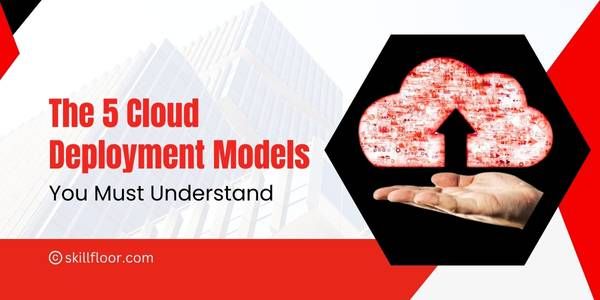How Cloud Computing Works: The Magic in a Friendly Way
Discover the magic of cloud computing! Explore how it works and experience the future of technology in a friendly and accessible way.

Cloud computing has become an integral part of our digital lives, enabling us to access a wide range of services and applications with just a few clicks. But have you ever wondered how it all works behind the scenes? In this blog, we will demystify the magic of cloud computing and explain how it works in a friendly and accessible manner.
Infrastructure in the Cloud
At the heart of the cloud infrastructure are massive data centers spread across different locations globally. These data centers house an extensive network of servers, storage devices, networking equipment, and other hardware. Think of them as giant warehouses filled with computing power and storage capacity.
Virtualization plays a key role in cloud infrastructure. It allows multiple virtual machines (VMs) to run on a single physical server, maximizing resource utilization. By creating virtual instances of computing resources like servers, storage, and networks, virtualization enables efficient sharing of resources among different users and applications.
Cloud infrastructure provides scalable storage capabilities. It allows businesses and individuals to store and retrieve vast amounts of data on-demand. The storage capacity can be easily adjusted based on the needs, ensuring that you have enough space to store your files and documents without worrying about running out of storage.
Virtualization
Virtualization is a fundamental concept in cloud computing that allows multiple virtual instances to run on a single physical server. It is the process of creating a virtual representation of computer resources such as servers, storage devices, or networks. By abstracting the physical hardware, virtualization enables efficient utilization of resources, improved flexibility, and cost savings.
In virtualization, a software layer called a hypervisor or virtual machine monitor (VMM) is installed on the physical server. The hypervisor manages and controls the virtual machines (VMs) by allocating hardware resources, such as CPU, memory, and disk space, to each VM. Each VM operates independently, appearing as a separate physical machine to the applications running on it.
Virtualization provides several benefits. First, it enables server consolidation, allowing multiple VMs to run on a single physical server. This leads to better resource utilization, reducing the need for additional hardware and lowering energy consumption.v
Service Models:
Cloud computing offers different service models to cater to different needs:
Infrastructure as a Service (IaaS): This model provides virtualized computing resources, such as virtual machines, storage, and networks. Users have full control over the operating system and applications running on these resources.
Platform as a Service (PaaS): PaaS offers a platform for developing, testing, and deploying applications. It provides a pre-configured environment where developers can focus on writing code without worrying about the underlying infrastructure.
Software as a Service (SaaS): SaaS delivers ready-to-use applications over the internet. Users can access these applications through a web browser without the need for installation or maintenance.
Elasticity and Scalability
In the dynamic world of cloud computing, two important concepts come into play: elasticity and scalability. These terms might sound technical, but let's break them down in a friendly and accessible manner.
Elasticity refers to the ability of a cloud infrastructure to adapt and scale resources up or down based on demand. Imagine your favorite coffee shop being able to magically adjust the number of baristas and coffee machines to accommodate the morning rush or a quiet afternoon. That's exactly what elasticity offers in the digital realm.
With elasticity, cloud services can automatically allocate more computing power, storage, or network resources as your needs increase. For example, if your website experiences a sudden surge in traffic due to a promotional campaign, the cloud infrastructure can seamlessly expand to handle the increased load. Once the peak period is over, the infrastructure can scale back down to optimize resource usage and minimize costs.
Pay-as-You-Go
Cloud computing operates on a pay-as-you-go model. Instead of upfront investments in hardware and infrastructure, users pay for the resources and services they consume. This cost-effective approach allows businesses to scale their IT infrastructure as needed, reducing capital expenditure and providing flexibility in budgeting.
Security and Data Protection
Cloud providers take security seriously. They implement robust security measures, including encryption, firewalls, and access controls, to protect data and ensure privacy. Data backups and disaster recovery mechanisms are also in place to safeguard against data loss or system failures.
Accessibility and Collaboration
Cloud computing enables seamless access to data and applications from anywhere, at any time, using any device with an internet connection. This accessibility promotes collaboration, allowing teams to work together, share files, and collaborate on projects in real-time, regardless of their physical location.
Redundancy and Reliability
Cloud computing providers implement redundancy measures to ensure high availability and reliability of services. Data is often stored in multiple data centers located in different geographical regions, reducing the risk of data loss or service disruption. In case of hardware failures or other issues, the workload can be seamlessly transferred to another available server or data center, minimizing downtime.
Continuous Updates and Maintenance
In the ever-evolving world of cloud computing, continuous updates and maintenance are essential to ensure the smooth operation of your cloud environment. Think of it as regularly fine-tuning your favorite musical instrument to keep it in perfect harmony. Let's delve into this concept in a friendly and accessible manner.
Continuous updates involve keeping your cloud infrastructure up to date with the latest software patches, security fixes, and feature enhancements. Just like you update your smartphone or computer to benefit from the latest features and bug fixes, cloud services require regular updates to ensure optimal performance and security.
Cloud service providers constantly monitor and release updates, which are seamlessly deployed to your cloud environment. These updates may include improvements in performance, reliability, and security protocols. By staying up to date, you can take advantage of new features and functionalities that enhance your overall cloud experience.
Green Computing
Cloud computing is environmentally friendly. By sharing computing resources among multiple users and optimizing resource utilization, cloud providers can achieve higher energy efficiency compared to traditional on-premises infrastructure. This helps reduce the carbon footprint and contributes to sustainable practices.
Innovation and Integration
Cloud computing fosters innovation by providing a platform for developing and deploying new applications and services. It enables integration with other technologies, such as artificial intelligence, machine learning, and big data analytics, opening up opportunities for advanced data-driven insights and automation.
Global Reach and Scalability
Cloud computing transcends geographical boundaries, allowing businesses to expand their reach globally. With data centers located around the world, users can access cloud services from anywhere, facilitating international collaboration and market expansion. Additionally, cloud services can scale up or down based on demand, ensuring resources are allocated efficiently and cost-effectively.
In the end of the day, Cloud computing has revolutionized the way we store, access, and utilize data and applications. It has become an integral part of our digital lives, enabling us to harness the power of the cloud to meet our computing needs.We explored the key components and principles of cloud computing, starting with the infrastructure that powers it all. We learned about data centers, virtualization, and the scalability and flexibility offered by cloud services. We discovered how virtual machines and containers enable us to run applications seamlessly across different devices and platforms.
Understanding the concept of cloud storage helped us realize the benefits of accessing our files and data from anywhere, at any time. We explored the importance of data security and the measures taken by cloud service providers to protect our valuable information.
Furthermore, we delved into the different service models: Infrastructure as a Service (IaaS), Platform as a Service (PaaS), and Software as a Service (SaaS). Each model offers its own advantages, giving us the flexibility to choose the level of control and management we require.





























































